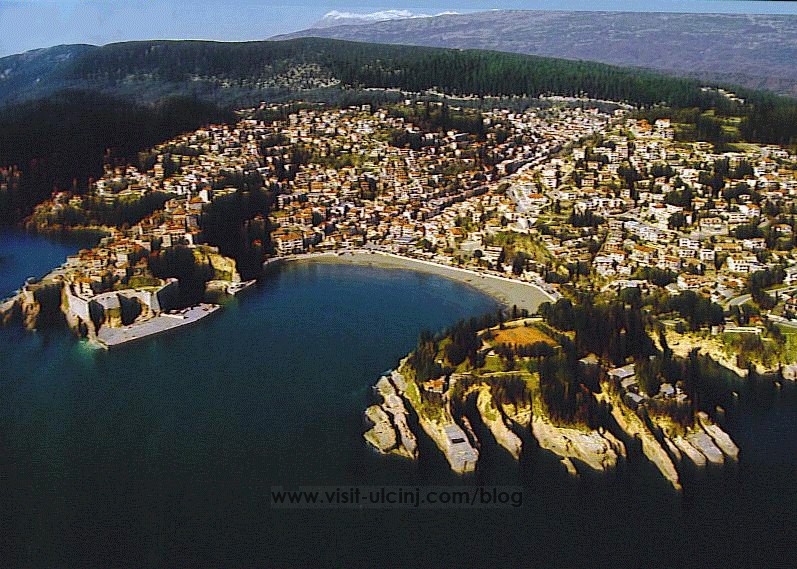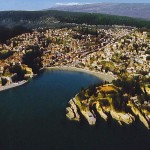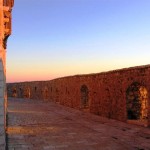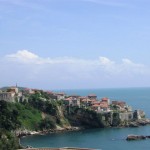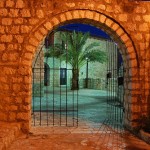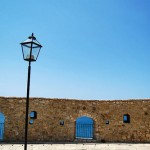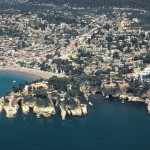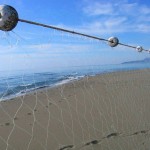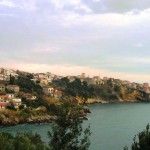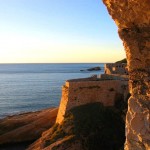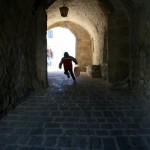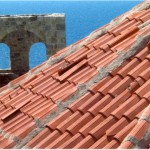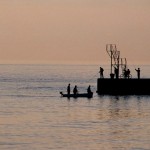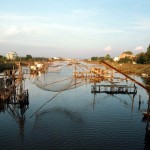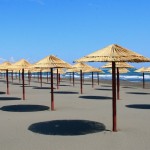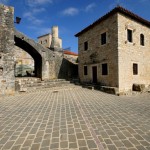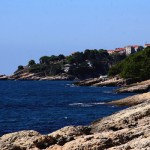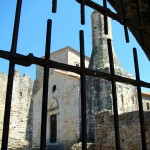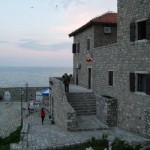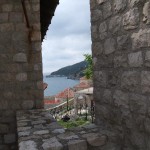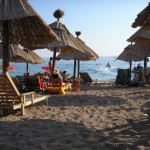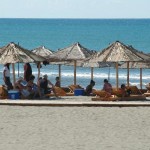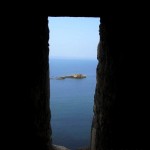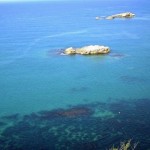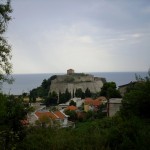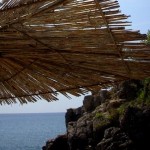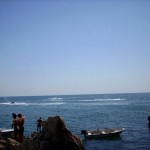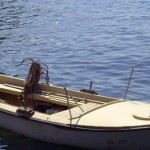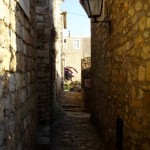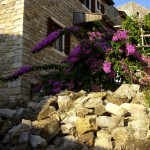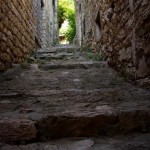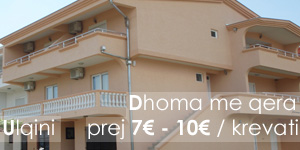City of Ulqin / Ulcinj – Montenegro – Video
Montenegro is generally considered by the world’s travel associations, as the likely top growth destination for tourism and resort development over the next ten years. A major factor in this consensus opinion is the miles and miles of pristine, sandy beaches in coastal Ulcinj ends its journey to the Adriatic Sea. The city shears along the sea in the shape of a bow and settles in an isle of a triangle form, with the Buna River (Bojana in Montenegrin) from two sides and the Adriatic Sea from third corner by covering an area of 260km². The population of Ulcinj is near 30,000 inhabitants. Perhaps the most famous beach in Montenegro is Plazha madhe (Velika Plaza in Montenegrin) – also known as Long Beach. Plazha Madhe is the longest beach in Montenegro, some 12,000 meters long (more than eight miles). The beach is also well-known for its unusually fine sand, reputed to have therapeutic qualities. Beneath the Old Ulcinj at the end of the small beach, the port of Ulcinj is located and well managed. The Old Town somehow survived many earthquakes; you can find restaurants, sport bars, cafes, and hotels. Traces of the oldest life in Ulcinj were discovered on the shore of the lake “Liqeni Zogajsh”, on the locality of Ceret. When the ground was prepared for the construction of the salt flats, earth floors of bronze-age Illyrian settlements were found. From this period also date two earth burial mounds (tumuli), Illyrian tombs dating from their life in the lowlands. They were found on the village of Zogaj, on the Bregu i kuq locality. When the Illyrians left the lowlands because of danger of enemies and moved into the mountains, they used stone mounds for interment. Ulcinj was known as the pirate capital of the Adriatic Sea before the medieval period. One of the most interesting aspects of Ulcinjs history occurred just after the Mediterranean Sea naval battle at Lapant in 1571. The famous Spanish dramatist, poet, and author wrote Don Quixote de la Mancha (Part I, 1605; Part II, 1615); Miguel de Cervantes Saavedra was imprisoned by the pirates of Ulcinj. It is believed that the famous Cervantes to his protagonist Don Quixote, in the novel, gave a lover named Dilcinee, a girl whose origin is from Ulcinj and who carried the name of the former name of Ulcinj- Cita de Dolcino, with whom Cervantes was in love. Cervantes spent almost five years in Ulcinj as his captors awaited a ransom payment, and it is thought that he along with other slaves was sold in the Old Town of Ulcinj at slave square.
Ulcinj enjoys a status as one of the oldest settlements on the Adriatic coast.
From ancient times through the 19th century, Ulcinj’s geographic position made it a place for conquest. Some conquerors stayed awhile, some stayed only a short time, but all left an influence of one kind or another. Ulcinj enjoys a status as one of the oldest settlements on the Adriatic coast.
History of Ulqin / Ulcinj
According to historical data Ulcinj is one of the oldest towns on the Adriatic coast. It is thought that Ulcinj is more that 2.000 years old. In this area for centuries the cultures of Orient and the West collided, which by the richness of the historical inheritance, can be felt in every step. As the tracks of the first settlements in Ulcinj appear even before V century B.C. it is considered that Ulcinj was founded by Illyrians, the people of the Indo-European origin. At the time of the free Illyrian state, Ulcinj experiences its greatest bloom.
Name Ulqin /Ulcinj
The original name of Ulcinj was Colchinijum, and it got its name from an Illyrian tribe. Before the year 162 B.C. Ulcinj is ruled over by an Illyrian tribe Olcinijantas, which in the II century B.C., was conquered by the Romans, so the ancient Colchinijum becomes Olcinijum.
Ulqin / Ulcinj during Roman Empire
During the time of the Roman Empire Ulcinj receives a status of a town with special privileges (Opida civijum romanorum), in order to later become a town with temporarily independent status a Municipium. After the division of the Roman Empire Ulcinj belonged to province Prevalis, which was a part of the East Empire, and the inhabitants becomes Christian. Because of an extraordinary geographical location, mild climate and relief, Ulcinj has been for centuries a target for the conquerors. That Montenegrin town at the utmost south was frequently ruined during the wars. Byzantium emperor Justinian has renewed and rebuilt Ulcinj, while the Ballshaj, Venetians and Turks have widened the town with new buildings.
Ulqin / Ulcinj during Venetian Rule
After the fall of the state of Zeta in 1405, Ulcinj is taken over by the Venetians and they rule for 150 years. An interesting period of Ulcinjs history occurred when the Republic of Venice controlled Dulcigno (as it was called in the Venetian language) until 1573 and incorporated the city in the Albania Venetia. In those Venetian years many Christian Albanians took refuge in Ulcinj from Muslim Turks. As during the reign of Venetian Republic Ulcinj had an evidential fortification, strategic, naval and economic and political significance.
Ulqin / Ulcinj during Turkish Rule
Turkish conquerors continued to develop strategic goals. Still, during the era of the Turkish reign over the town, Ulcinj gains a completely Oriental look. Mosques, Turkish baths, drinking fountains, watch towers, inns and burial chambers are being built. Everything in towns is adjusting to the new masters. Ulcinj was also famous as a place of a long and rich naval and merchant tradition. In this town sailing reached its top rise in XVII, XVIII, and during the XIX century. The naval trade of people from Ulcinj with their own boats took place in bigger harbors and trading centers of the Adriatic coast, Levant and the Mediterranean. During the era of Turkish reign (1571 1880) Ulcinj with its trading fleet has become the main pillar of Ottoman Empire on the Mediterranean. Brave and skilful mariners from Ulcinj have poorly acknowledged the state reign of the Turks. Until the proclamation of Mehmed Bushatlija for the Grand Vizier of Shkoder, Ulcinj was like a small republic. It is written that the Grand Vizier of Shkoder in deceit, to restrain the piracy, which at that time grew more and more, in port Valdanos sank liners form Ulcinj, after which people from Ulcinj officially recognize the Turkish reign.
During the era of the Montenegrin rein (1880 1918)
In Ulcinj, 107 sailing boast were registered. People from Ulcinj were skilful mariners and good ship freighters. In the XVII century the fleet of Ulcinj had 500 ships and two master ships, which sailed across the Mediterranean Sea. Many wars have imperiled the development of the Ulcinj fleet. In the XIV century Ulcinj was known by 400 pirates from Malta, Tunis, and Algeria who have inhabited Ulcinj after the Kanidian war (1669), so Ulcinj has turned into a dangerous pirate nest, which remained a characteristic of the town during the XVII and XVIII century as well. After almost 300 years, at the beginning of the 1878 Ulcinj is freed from the Turks, and after the decision in Berlin congress on the November 10 1880, Ulcinj is annexed from Albania to the Principality of Montenegro. The First World War Ulcinj waited as an integral town of the former Montenegrin Principality. Even though the King and the Prince of the Montenegro, Nikola I Petrovic Njegos, at the beginning of the XX century moved one part of the Christian citizenship, in Ulcinj Islamic citizenship, that was loyal to the Principality of Montenegro, still prevailed. As in many other towns of the Montenegrin Coast in Ulcinj the vortex of the Second World War was felt. After the Second World War the renewal of all towns on the Montenegrin Coast as well as Ulcinj began. The great tourist potential which Ulcinj with the surroundings has even today, was and remained a great chance for a successful development of the most important economic branch in Montenegro tourism.. Today, Ulcinj is a famous multiethnic and tourist town in the South of Montenegro, which from year to year marks greater and greater number of domestic and foreign tourists.

